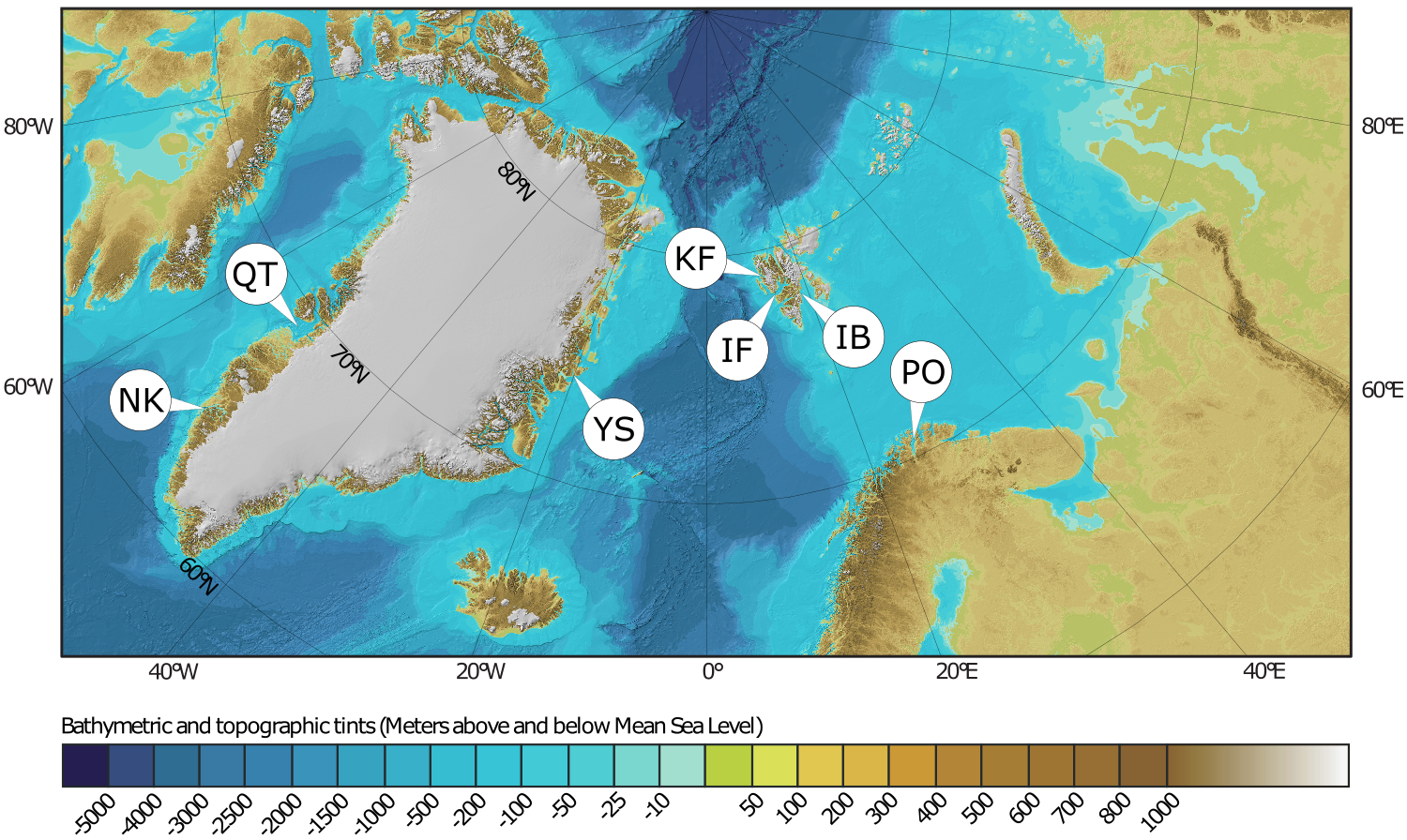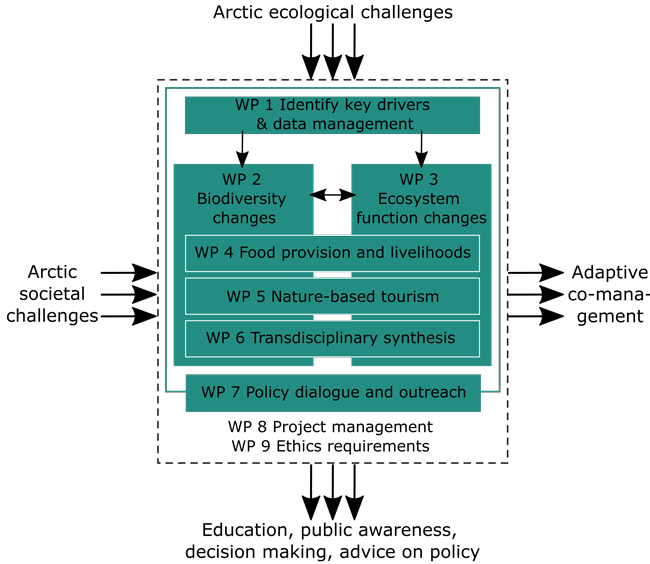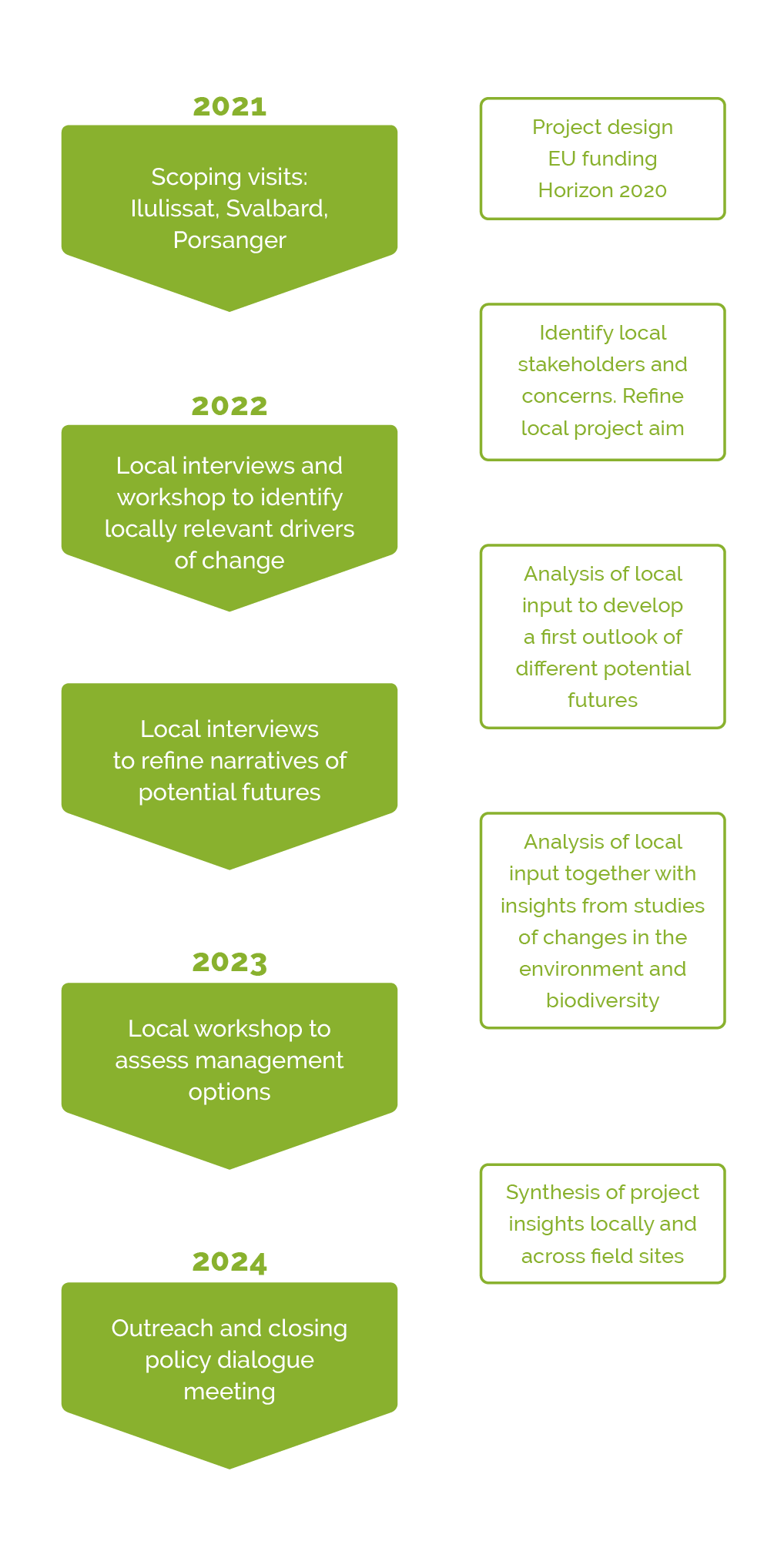Environments connected to Arctic fjords are changing rapidly, with consequences for society. A warmer climate is an important driver of change, but other factors also play a major role, including pressures and opportunities from fishing, tourism, shipping, and changing socio-economic conditions. FACE-IT is an EU-funded research program about managing the consequences of these changes with focus on marine biodiversity and Arctic societies.
FACE-IT aims to enable adaptive co-management of social-ecological fjord systems in the Arctic in the face of rapid cryosphere and biodiversity changes.

A major activity in FACE-IT is to learn together with local communities about the relationship between environmen-tal changes and Arctic livelihoods in order to support man-agement at the local and national levels. The overarching objective of FACE-IT is to enable adaptive co-management of social-ecological fjord systems.
Glacier fronts and sea ice systems are hotspots of biodiversity. Their retreat will pose threats to Arctic coastal ecosystem function and eventually local livelihoods. The Arctic is a harbinger of the consequences of multiple global and regional environmental change on ecosystems and livelihoods: The overarching objective of FACE-IT is to enable adaptive co-management of social-ecological fjord systems in the Arctic in the face of rapid cryosphere and biodiversity changes.
The concept of FACE-IT rests on a comparison of selected Arctic fjord systems at different stage of cryosphere loss in Greenland, Svalbard and Finnmark, Northern Norway.
FACE-IT aims to enable adaptive co-management of social-ecological fjord systems in the Arctic in the face of rapid cryosphere and biodiversity changes.
Objectives
- Identify and quantify key drivers of biodiversity changes and their past and future trends.
- Identify cascading effects of a changing biodiversity associated with ongoing and projected changes in Arctic coastal food webs.
- Assess the interdependencies between environmental changes and Arctic coastal livelihoods.
- Support adaptive co-management at the local and national levels.
FACE-IT rests on three overarching research approaches:
- the comparison of fjords and adjacent coastal areas under different degrees of cryosphere loss
- the integration of existing data through experimental research and modelling
- an emphasis on coproduction of knowledge to develop and propose adaptive co-management strategies that can safeguard local coastal livelihoods in times of rapid change
Reference:
Jakobsson, M., L. A. Mayer, B. Coakley, J. A. Dowdeswell, S. Forbes, B. Fridman, H. Hodnesdal, R. Noormets, R. Pedersen, M. Rebesco, H.-W. Schenke, Y. Zarayskaya A, D. Accettella, A. Armstrong, R. M. Anderson, P. Bienhoff, A. Camerlenghi, I. Church, M. Edwards, J. V. Gardner, J. K. Hall, B. Hell, O. B. Hestvik, Y. Kristoffersen, C. Marcussen, R. Mohammad, D. Mosher, S. V. Nghiem, M. T. Pedrosa, P. G. Travaglini, and P. Weatherall (2012) The International Bathymetric Chart of the Arctic Ocean (IBCAO) Version 3.0, Geophysical Research Letters 39(12):L12609. doi: 10.1029/2012GL052219


